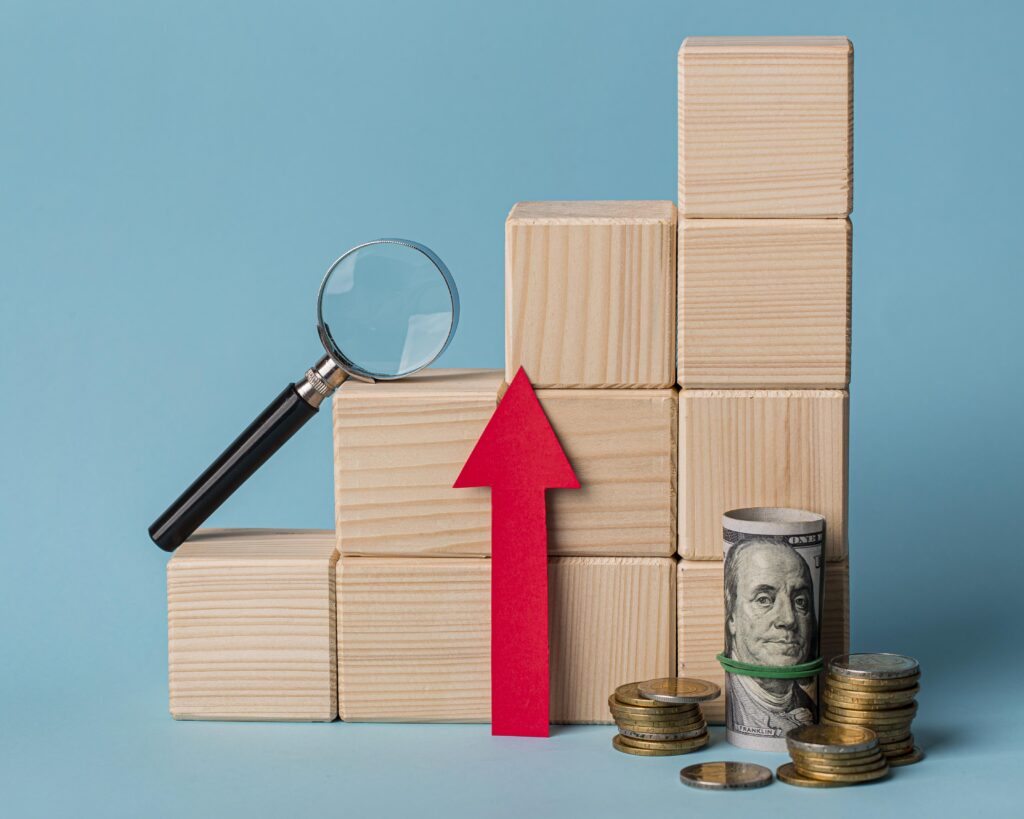Understanding Yield: Key Types, Factors, Risks, and Applications in Finance
Yield represents the income generated by an investment, typically shown as a percentage of its cost or current market value. It is a critical metric in finance, offering insights into an asset’s profitability over time. For instance, with bonds, yield reflects the interest payments received relative to the bond’s purchase price or face value. With stocks, yield represents the dividends paid out to shareholders as a percentage of the stock’s price.
Yield calculations help investors assess how much return they can expect from various assets, which is especially valuable when comparing potential investments. Higher yields often indicate more profitable investments, though they may also carry higher risk. By evaluating yield, investors can make informed decisions, selecting assets that align with their financial goals, risk tolerance, and income needs. Whether evaluating individual stocks, bonds, or entire portfolios, understanding yield is essential for maximizing returns and optimizing investment strategies.

How does yield differ from total return?
Yield and total return are essential metrics for assessing an investment’s performance, each offering a unique perspective on profitability. Yield measures the income generated from an investment—such as interest from bonds or dividends from stocks—as a percentage of its cost or market value. This metric is particularly useful for investors focused on steady income streams, as it highlights the direct cash flow an asset provides without accounting for changes in its price.
In contrast, total return provides a broader view by combining income with any price appreciation or depreciation over time. It captures both the income component and any gain or loss in the investment’s value, resulting in a more comprehensive assessment of overall profitability. Total return is therefore valuable for evaluating the cumulative performance of an investment, especially in cases where price fluctuations play a significant role.
While yield focuses strictly on income and can help compare investments with similar cash flow potential, total return delivers a complete picture of financial outcomes. For investors seeking a balanced perspective on both immediate income and long-term growth, considering both yield and total return can lead to more informed and strategic investment decisions.
What are the types of yield?
Several types of yield provide insights into the profitability of an investment. Each type helps investors understand different aspects of returns, whether from dividends, interest, or overall gains. Understanding these yields is essential for making informed investment decisions. The key types of yield are explained in detail below.
Dividend yield
Dividend yield measures the income an investor can expect from owning a stock through dividends, expressed as a percentage of the stock’s current market price. This yield gives investors insight into the income return they might receive relative to the stock’s price, making it especially valuable for evaluating income-generating stocks. Stocks from companies with a strong history of stable dividend policies, like those in utility or consumer goods sectors, often attract investors seeking regular income.
To calculate dividend yield, you use the following formula:
Dividend Yield = (Annual Dividends per Share / Current Stock Price) × 100
This simple calculation highlights the return solely from dividends, without factoring in potential price changes in the stock itself. For instance, if a company pays an annual dividend of £2 per share and the current stock price is £50, the dividend yield would be 4% (calculated as £2 / £50 × 100). This percentage helps investors assess whether the income from dividends aligns with their financial goals or if it surpasses yields from other income-generating investments.
Moreover, dividend yield provides a way to compare stocks based on income potential. For those focused on consistent returns, especially during market fluctuations, a higher dividend yield can indicate a stable income source.

Bond yield
The bond yield reflects the income an investor receives from a bond, usually through regular interest payments, relative to the bond’s price. This yield is an important metric, providing insights into the profitability and potential return on a bond investment. There are several ways to express bond yields, each offering a different perspective on the income generated:
Nominal yield
This is the bond’s stated interest rate (or coupon rate) based on its face value. For instance, if a bond with a face value of £1,000 offers a 5% coupon rate, the nominal yield is 5%, or £50 annually. However, this does not reflect changes in the bond’s price after issuance.
Current yield
This yield measures the annual coupon payment relative to the bond’s market price. It is calculated as follows:
Current Yield = (Annual Coupon Payment / Current Bond Price) × 100
For instance, if a bond has a £1,000 face value, a £50 annual coupon payment, and is currently priced at £950, the current yield would be approximately 5.26% (£50 / £950 × 100).
Yield to maturity (YTM)
YTM is the most comprehensive yield measure, as it factors in the bond’s total returns if held to maturity. YTM considers both the coupon payments and any gain or loss if the bond is purchased at a price different from its face value, providing an annualized return estimate. Calculating YTM is more complex, requiring the time value of money and all expected cash flows, but it offers a complete view of potential bond earnings.
Current yield
Current yield measures the income generated by an investment, such as a bond or stock, relative to its current market price. It provides a snapshot of the return on investment in terms of income, excluding any capital gains or losses. Current yield is helpful in comparing the income potential of different investments and is calculated using the formula:
Current Yield = (Annual Income / Current Price) × 100
For example, if a bond with a face value of £1,000 pays £50 annually and is currently priced at £900, the current yield is approximately 5.56% (£50 / £900 × 100). This yield helps investors understand the expected return based solely on the income component.
Yield to maturity (YTM)
Yield to Maturity (YTM) is the total return an investor can expect to earn if they hold a bond until it matures. It considers all coupon payments received over the bond’s life, the purchase price, the face value, and the time remaining until maturity. YTM is a comprehensive measure that provides a complete picture of a bond’s profitability, factoring in the reinvestment of coupon payments at the same rate. The formula for YTM is more complex and often requires financial calculators or software, but a simplified version is:
YTM ≈ [(Annual Coupon Payment + (Face Value – Current Price) / Years to Maturity) / ((Face Value + Current Price) / 2)] × 100
The YTM will be higher than the coupon rate for a bond purchased at a discount because the investor gains from both the interest payments and the increase in bond value as it approaches maturity. This yield helps investors compare bonds with different prices, coupon rates, and maturities.
Yield to call (YTC)
Yield to Call (YTC) is relevant for callable bonds, which the issuer can redeem before their maturity date. YTC calculates the return an investor can expect if the bond is called at the earliest possible date. This measure is important for investors considering callable bonds, as it helps assess the potential returns if the bond is called early, usually at a price above the face value. The YTC calculation involves the bond’s current price, call price, coupon rate, and time until the call date.
YTC ≈ [(Annual Coupon Payment + (Call Price – Current Price) / Years to Call) / ((Call Price + Current Price) / 2)] × 100
For example, if a callable bond has a call date in five years, a coupon rate of 6%, and a call price of 102 (102% of the face value), YTC calculates the return, assuming the bond will be called at the earliest possible date. This measure helps investors understand the potential impact of the bond being called before maturity.
What are the factors that affect yield?

Several factors can influence the yield of an investment, impacting both the income generated and the overall return. Understanding these factors is essential for investors to evaluate opportunities and make informed decisions. The key factors that affect yield include:
Market interest rates
Market interest rates are one of the primary determinants of yield, especially for bonds and other fixed-income securities. When interest rates rise, the prices of existing bonds typically fall, leading to higher yields, as new bonds are issued with higher rates. Conversely, when interest rates decline, existing bonds with higher rates become more valuable, causing yields to decrease.
Credit risk
Credit risk refers to the likelihood that an issuer, such as a corporation or government, will default on its debt obligations. Higher credit risk generally leads to higher yields, as investors demand a risk premium for holding riskier securities. Conversely, securities issued by entities with high creditworthiness, such as government bonds from stable countries, tend to have lower yields due to lower perceived risk.
Inflation
Inflation erodes the purchasing power of investment income. As inflation rises, the real yield, or the yield adjusted for inflation, decreases. Investors typically demand higher nominal yields to compensate for the loss of purchasing power, especially in long-term investments. Inflation-protected securities, such as Index-linked Gilts, adjust their yields based on inflation rates to protect investors from this risk.
Economic conditions
The overall economic environment can significantly influence yields. During economic expansions, companies and governments are generally more financially stable, which can lead to lower yields due to lower perceived risk. Conversely, during recessions or periods of economic uncertainty, yields may rise as investors seek higher returns to compensate for increased risk.
Supply and demand
The supply and demand dynamics for particular securities can also impact yields. If an ample supply of bonds is issued and the demand does not keep pace, the prices of bonds may fall, leading to higher yields. Conversely, high demand for specific securities, such as safe-haven assets during market volatility, can drive prices up and yields down.
Issuer’s financial health
The financial stability and profitability of the issuer, whether a corporation or government, play a crucial role in determining the yield. A solid financial position and steady revenue streams can lead to lower yields, as the risk of default is minimal. In contrast, issuers with uncertain financial outlooks may offer higher yields to attract investors.
Currency exchange rates
For international investments, changes in currency exchange rates can affect the yield. If the currency in which the investment is denominated strengthens against the investor’s home currency, the effective yield increases, and vice versa. This is particularly relevant for bonds and other fixed-income securities.
Tax considerations
Tax policies can influence the after-tax yield on investments. Specific securities, such as municipal bonds in the United States, offer tax-exempt interest, making their yields more attractive on an after-tax basis compared to taxable investments.
Applications of yield in finance
Yield has several practical applications in finance and investment, helping investors and financial analysts assess and compare investment opportunities. Here are some critical applications of yield:
Investment comparison
Yield allows investors to compare the income-generating potential of various investments, such as stocks, bonds, and real estate. Investors can determine which assets offer the best returns relative to their prices by looking at yields.
Income-focused investment
For investors seeking regular income, such as retirees, yield is a crucial metric. It helps them identify investments that provide steady income streams, such as dividend-paying stocks or bonds with attractive interest rates.
Risk assessment
Yield can also indicate risk. Higher yields suggest higher risk, as investors demand more return for taking on additional risk. This helps investors gauge the risk-return profile of different investments.
Portfolio diversification
Investors can diversify their portfolios by analysing yields to balance income generation with capital growth. This involves including a mix of high-yield (often higher risk)and low-yield (usually lower risk) investments. Diversification helps manage risk and optimise returns, allowing investors to achieve a more stable and balanced portfolio.
Bond valuation and selection
Yield is critical in bond markets, where it helps investors evaluate the return on bonds, considering factors like interest rates and credit risk. Yield to Maturity (YTM) and current yield are particularly important for bond valuation and selection. These metrics provide insight into the potential profitability of bonds and are used to compare different bond investments.
Economic indicator
Yield curves, which plot yields against maturities, serve as economic indicators. A standard yield curve suggests economic growth, while an inverted yield curve can indicate a potential recession. Analysts and investors use yield curves to gauge market expectations about future interest rates and economic activity.
Tax considerations
Taxable vs. tax-exempt yields, such as those on municipal bonds, help investors make decisions based on after-tax returns, optimising their investment choices for tax efficiency. Investors in higher tax brackets may find tax-exempt bonds more attractive due to the tax benefits.
Corporate financial analysis
Companies use yield metrics to assess the cost of financing through bonds or other debt instruments. Understanding the yield spread (the difference between bond yields and risk-free rates) helps make financing decisions. A wider spread may indicate a higher perceived risk for the issuing company.
These applications yield a fundamental concept in personal finance and broader economic analysis, guiding investment strategy, risk management, and financial planning decisions.
How does yield indicate risk?

Yield is a crucial indicator of risk in investments, helping investors assess the balance between returns and potential downsides. Typically, a higher yield implies greater risk. For example, companies with uncertain financial health often offer higher yields on bonds to attract investors, compensating them for the increased risk of default. Known as credit risk, this concept means that bonds from stable entities, like governments or established companies, usually have lower yields, reflecting their reduced likelihood of default.
Interest rate risk is another factor affecting yield, particularly for longer-term bonds. These bonds generally offer higher yields to compensate investors for the potential impact of rising interest rates, which can reduce the bond’s market value if sold before maturity.
Additionally, inflation risk influences yield. High inflation erodes the purchasing power of fixed-income returns, prompting investors to seek higher yields on long-term bonds to preserve their returns’ value relative to rising prices.
Lastly, liquidity risk affects yield levels. Investments that are harder to sell quickly—due to limited buyers or a niche market—often offer higher yields. This compensates investors for the difficulty of accessing their money without potentially incurring losses.
Together, these risk factors show why investors often associate higher yields with investments carrying greater financial uncertainty, encouraging them to carefully evaluate yields as part of their overall strategy.
How are differences in yield expectations related to risk levels?
Differences in yield expectations among various investments often relate to their risk levels. For example, investments with lower credit ratings typically offer higher yields because they are riskier, while safer investments like government bonds from stable countries usually have lower yields.
Market conditions also play a role; during uncertain times, investors flock to safer investments, driving their yields down, while riskier investments need to offer higher yields to attract buyers. Economic conditions influence yield expectations as well; in solid economies, riskier investments might offer higher yields as companies seek to expand, while in downturns, safer investments become more appealing, lowering their yields.
Additionally, longer-term investments generally offer higher yields to account for the greater risk over time, such as potential changes in interest rates or inflation.Finally, the issuer’s financial health affects yield; entities in solid financial positions can offer lower yields because investors see them as less risky, whereas those in weaker positions must offer higher yields to attract investors. Thus, yield levels provide a valuable gauge for the risk associated with different investment opportunities.
Frequently Asked Questions
What is the difference between yield and total return?
Yield represents the income generated from an investment, such as interest or dividends, expressed as a percentage of the investment’s cost or current market value. Total return, on the other hand, includes both the income from yield and any capital gains or losses, providing a complete picture of the investment’s overall performance.
How does yield help in comparing different investments?
Yield allows investors to compare the income-generating potential of various investments, such as stocks, bonds, and real estate. By standardising returns as a percentage, yield makes assessing and comparing different options easier, helping investors choose investments that align with their income or growth objectives.
Why do higher yields often indicate higher risk?
Investments with higher risk often have higher yields because they typically involve more significant uncertainty or lower credit ratings. For instance, bonds issued by financially weaker companies may offer higher yields to attract investors, compensating for the increased risk of default.
What factors can affect the yield of an investment?
Several factors can influence yield, including market interest rates, credit risk, inflation, economic conditions, supply and demand, the issuer’s financial health, currency exchange rates, and tax considerations. These factors impact both the income the investment generates and the overall return.
How can economists use yield as an economic indicator?
Yield curves, which plot yields against maturities, are valuable economic indicators. A standard yield curve suggests economic growth, while an inverted yield curve can signal a potential recession. Analysts use yield curves to gauge market expectations about future interest rates and economic activity.


